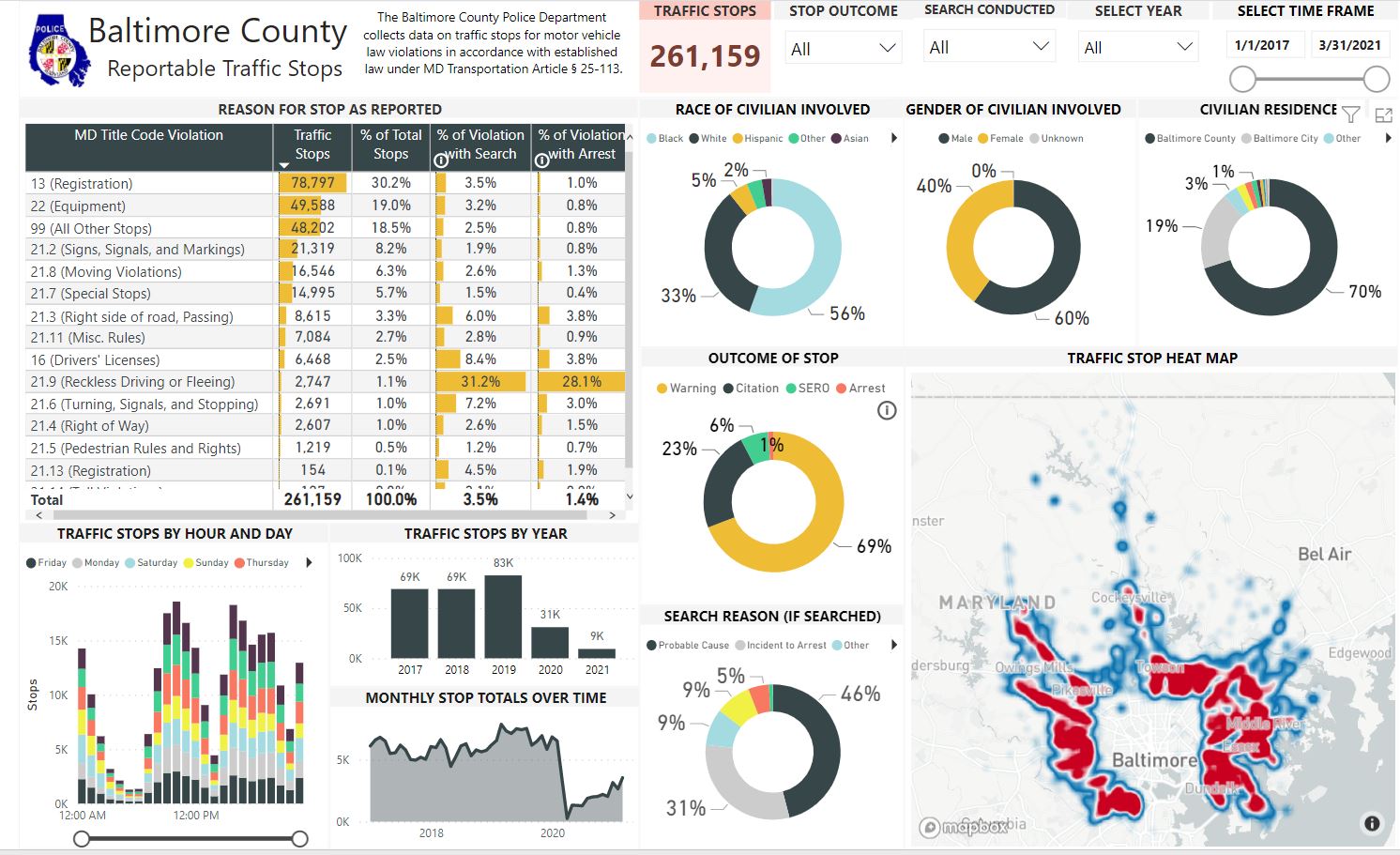A new digital dashboard from Baltimore County that tracks police traffic stop data from 2017 to the present is now available for the community at the BCSTAT site, the county government said on Monday.
Developed by Baltimore County’s BCSTAT team in collaboration with the Baltimore County Police Department, the dashboard allows users to view stop, search, and arrest trends over time, along with demographic statistics and times of day with the most frequency of stops, among other data.
Officials said the release of the dashboard represents follow-through on recommendations to be more transparent with data that were made by the Equitable Policing Advisory Group, which was convened in 2019 by County Executive Johnny Olszewski.
“This new dashboard reinforces our dedication to transparency and accountability,” said Baltimore County Police Chief Melissa Hyatt, in a statement.
This dashboard’s launch comes a year after 2020’s summer of protest in which demonstrators asked for increased accountability of police officers. Before that, a 2019 preliminary review of basic traffic stop data showed that Black people were issued citations at a higher rate than other individuals. The dashboard shows the racial breakdown of those involved in stops, but it doesn’t show the racial breakdown of who is receiving citations in these stops. So, the dashboard can’t be used as a community tool to track the 2019 issue.
“This new tool represents an important step forward and reaffirms the County’s continued commitment to implementing the recommendations of the Equitable Policing Advisory Group,” said Troy Williams, Baltimore County’s chief diversity and inclusion officer, who chairs the advisory group. “Moving forward, we must continue to work across the criminal justice continuum in order to foster more equitable policing for every resident across Baltimore County.”







